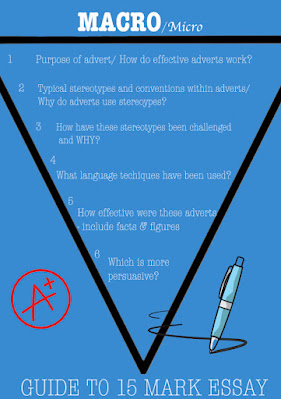The podcast discusses the men’s magazine ‘Loaded’ created by James Brown in 1994. The representation of men in the magazine contrasts to the ‘New Men’ of the 90s, who were encouraged to hold responsibilities ; the ‘lads’ in the magazine are cocky, cheeky, interested in drinking, and caused chaos in politics and media. I found it interesting how the women were happy to not only be sexualised but sexualise themselves, with the creation of the ‘Ladettes’, who are frisky, confident and desirable. It reflects how in the 90s, people believed to have defeated sexism and racism, therefore the magazine is about having a laugh- instead of prejudicing against a group of people.
Wednesday, 27 November 2024
Tuesday, 19 November 2024
Interesting theory fact
Barthes explains how because the media often looks naturalistic and real, audiences believe that the information they consume from these products are common sense and true. This can lead to misinformation and inaccurate representations of society.
Shelter video
Shelter YT video
https://m.youtube.com/watch?v=CYvA7-AD0AE
I found this video fascinating as it discussed how the value a house ‘could’ have (hope value) greatly increases the prices of houses on the market, making it difficult for people to buy houses as the prices are not realistically attainable.
Media magazine
Media Magazine
The Media Magazine’s article on the television show Sex Education discusses how the programme has cast a long shadow over previous representations of sex, by utilising naturalistic characters that experience realistic issues in terms with sex and their sexual identity (for example, coming out, masturbation, pressure to perform). The article goes into detail about each character and how they convey a real insight into the lives of 16 years olds. Otis is the epitome of an awkward teenager who deals with his classmates’ sexual taboos by giving them informative and accurate advice; his insecure and caring nature subverts from toxic masculinity, as he is comfortable discussing his feelings and is a progressive young man. The article also explains how the show represents minorities and gives them complex character arcs and narratives. For example, Eric battles complicated topics such as his sexual identity, Nigerian heritage and finding himself again after experiencing homophobic assault. At the end of the article, the journalist explains how television shows abstain from presenting realistic depictions of sex, with no discussion of foreplay, contraception or comfort. However, in Sex Education, the stigma surrounding sex dissipates- with a diverse range of characters with “universal experiences”-(Laurie Nunn).
Monday, 18 November 2024
Link to central hub
http://centralhubsouthendhigh.blogspot.com/
-
I included an Ariana Grande album because she is my favourite artist, a tap shoe because I love to dance, and references to IT and Jaws beca...
-
Media Magazine The Media Magazine’s article on the television show Sex Education discusses how the programme has cast a long shadow over pr...
-
The podcast discusses the men’s magazine ‘Loaded’ created by James Brown in 1994. The representation of men in the magazine contrasts to th...



